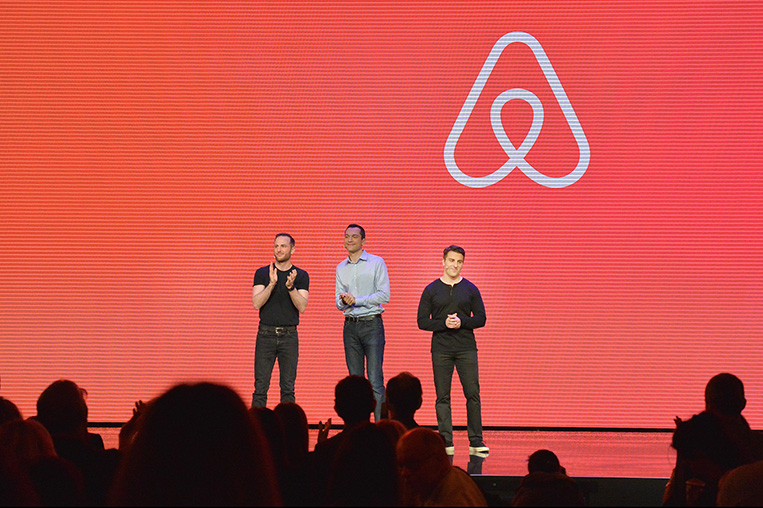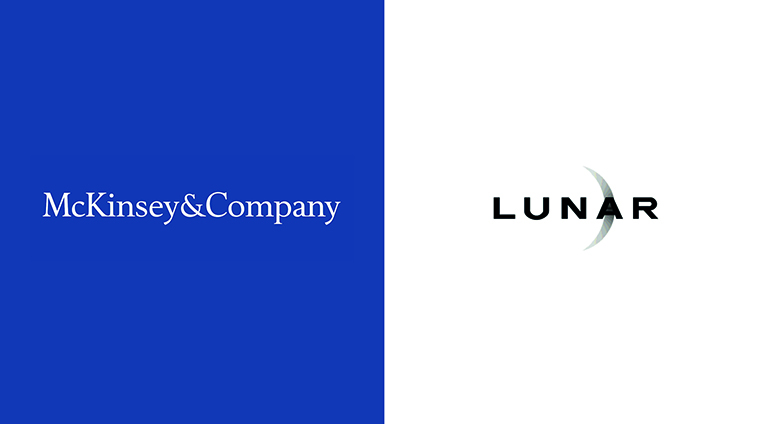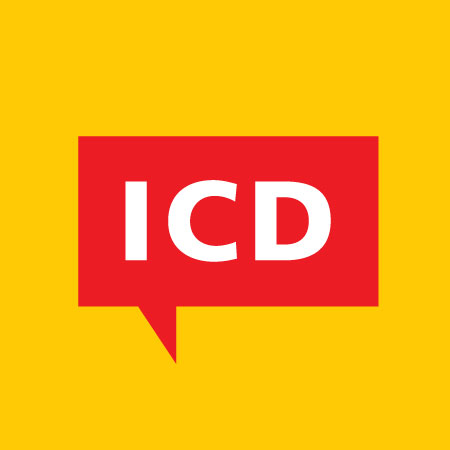The Business of Consulting
In the last decade, the more far-seeing set of mature, large businesses has been making hopeful approaches towards design. Their ardour comes from seeing design as a source of competitive advantage, and has been reported on widely.
This column, too: we labelled Apple, Airbnb, Google and their increasing tribe as ‘digital darlings’. In their wake, we noted, traditional behemoths like P&G and GE have made design more central, and made products, development and innovation (thus design) central to their resource allocations and hierarchy. Nowadays, these grey gentlemen are far less bashful in their approaches. The elevation of design seems like the new orthodoxy. In innovation cultures like the Silicon Valley, it may even be passe.

(L-R) Airbnb Founders CTO Nathan Blecharczyk, Chief Product Officer Joe Gebbia and CEO Brian Chesky speak onstage during the “Introducing Trips” Reveal at Airbnb Open LA on November 17, 2016 in Los Angeles, California. (Photo by Charley Gallay/Getty Images for Airbnb)
The digital darlings represent the school of creative disruption. It is based on the new realisation of the centrality of user/customer experience, via human-centred design (in the jargon) rather than on physical products; so goes the narrative.
The digital darlings represent the school of creative disruption. It is based on the new realisation of the centrality of user/customer experience
This narrative needs flesh and detail. Deep Design brings it to you by examining the intriguing phenomenon of large management consulting firms acquiring design companies, while it’s no surprise for product firms to do so. It provides a fuller explanation of what design can do for business.
The facts: in 2015, McKinsey has made a large acquisition of Lunar, a highly regarded, 375 strong product design firm. Accenture too has a similar albeit smaller acquisition in Fjord, a service design firm, and owns several agencies besides, as does Deloitte.

In 2015, McKinsey has made a large acquisition of Lunar, a highly regarded, 375 strong product design firm.
Design and management consulting are profoundly dissimilar. Most fundamentally, design is in the making business, rather than the advising business. Design synthesises different strands of observed reality in order to imagine a better future. It acts via a new relationship between product (for example) and users. The result might be computers that run on pictures, and which housewives and their kids can use; or taxis on demand from a company that doesn’t own any, from a magically visual screen on a handheld device.
Design and management consulting are profoundly dissimilar. Design is in the making business, while management is in the advising business.
Management consulting is predicated on continuity, optimising the present. It analyses situations in the light of cases: data on how peer or near peer firms as similar as possible to the client acted, and what resulted. This industry knowledge makes the consulting practice formidable—they know too much. They may suggest a broad class of actions, but never intervene to engage with specifics inside the client’s messy complexity.
It’s realistic to propose that these times present a challenge to management consulting. Industry and customer data from sources old and new (social media for example) has never been more available, and with new tools for analysis, they can substitute for knowledge of industry frameworks acquired over decades. The knowledge advantage between clients and a Mckinsey may be melting, but this age may be also rendering what’s left less relevant.
That’s because it’s an age where industries are digitally disrupted, where consumers, users and suppliers can cause shapeshifting transformations to both markets and supply ecosystems in a wink. Technological changes seem too extreme to handle even when their building blocks are known. Neither the iPhone or the iPod introduced virgin technologies, but had decisive impact on their industries. Today’s building blocks are artificial intelligence, augmented reality, blockchain, and the internet of things.
Management consulting likes certainty. It uses deductive methods (if-then) and industry experience (as-is) to pronounce the one magnificent conclusion that’s ‘not wrong’, preferably infallible or at least unfalsifiable. Authority is prized; clients are vanquished with intellect. Its preferred output is a presentation deck, with a recommendation from a set of known possibilities. It’s final.
Design methods tolerate uncertainty, and are happy with mere validity. ‘Can work’ might be preferable to ‘it is so’; certainty is an illusion, and proof is hubris. Its methods lean more on what-if than if-then. An imperfect solution illustrates the question better than an analysis. Design’s preferred response might be a cheap, rapid prototype, and there are more where they came from. Tentativeness? That’s confidence.
Forcing order by sheer will and intellect may not be appropriate in a storm, because it assumes that waves stand still, so to speak. Change affects not just the client industry, but is part of a mesh of interactions (the motor car needs petrol, and petrol leads to…). The laws of speed dictate that a perfect response will be redundant, so it’s better to be premature than late. Accumulated knowledge about slow-changing industries may be far less valuable. That’s why a yet-to-be product may be a better response to choppy waves and the onrush of technologies.
Management consultancies may acquire design companies as insurance against this threat. Design firms might find it safer to be allied to a major practice, rather they clash with them for the ears and purses of the same clients. They also enjoy the consulting firms peremptory access to client and industry data that they are often denied in the normal course.
Usually consulting firms don’t fold the acquisition in, or absorb it, fearing a clash of cultures and values. Neither do their clients, (digital darlings excepted) acquire design firms themselves. Even the best intentioned can fail—the celebrated firm Ideo merged with their best client, who returned the firm to its founder two years later.
Companies may be comforted by inserting a layer of predictability that a consulting practice brings in between themselves and the design firm. They could doubt their own ability to extract value from the design way of working, which is a competence that a design-led culture like Apple’s embeds. Perhaps clear, deep voiced, instructions are preferable to response and conversation.
It’s not likely that design consulting will influence the main management consulting business to the degree that a new type of consulting grows. Complex life evolved this way, by the merger of simpler forms, but the process took aeons.
Meanwhile, there’s an opportunity or threat to be responded to first. A solid, thoroughly validated, presentation deck in a six months or an observant but speculative prototype in one?
____________________
First published in a slightly modified form ‘The Business of Consulting’ in Business Standard, 26 May, in Deep Design, a fortnightly column by Itu Chaudhuri.

